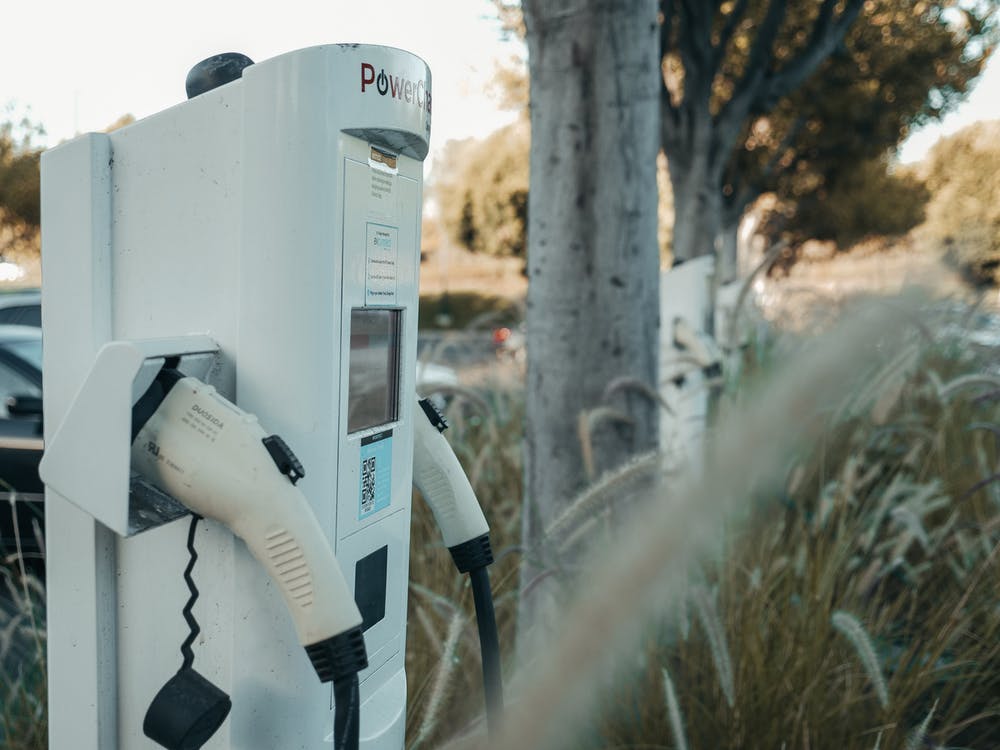Charging infrastructure can take up to 2 years to install
Supply chain issues may be pushing back deliveries of electric vehicles, but that doesn’t mean last-mile delivery fleets looking to adopt can sit back and wait.
“Fleets may think they have plenty of time … but sometimes it will take one to two years for the infrastructure upgrades from the utility,” explained Greg Hintler, U.S. managing director for The Mobility House, an EV charging infrastructure company. “If you want to have electric vehicles in two years, you should have already started or need to be getting started now.”
Hintler said he has heard from several companies that were promised EV delivery vans this year, but suppliers are pushing back those delivery timelines as much as two years.
“What we’ve heard from fleets, what we’ve heard from OEMs is there are massive supply chain challenges and what that translates to is very few vehicles being delivered at the moment,” he said. “A lot of fleets are hearing deliveries are being pushed to the end of the year, and the reality is it will be 2023.”
The Mobility House focuses on building out charging infrastructure. Among its clients are the Austrian Postal Service and the Irish Postal Service. Hintler said its customer base now crosses 800 fleets in the U.S. and Europe.
“Because we are playing both in the United States and Europe, we can … get a preview of what’s to come,” he said while speaking to Modern Shipper from Germany. “Here in Europe, they are so far ahead compared to what we are seeing in the U.S. However, we have commitments now from the major players. We know it is going to come in the U.S. and come quickly. There is a ton of demand. Demand isn’t the issue, it’s on the supply chain.”
Delays are being caused by many of the same issues affecting traditional automotive lines — semiconductors — as well as port congestion. In addition, the Russian invasion of Ukraine has strained steel supplies globally, with about one-third of European steel coming from plants in Ukraine.
“On top of that, the enormous uptake in demand, whether it is because of government regulation or corporate [goals] … has become a global challenge and all the suppliers are trying to allocate the little product they can get pretty evenly,” he said.
Power needs are not a major concern
One of the big questions around the deployment of electric vehicles is the strain they could place on the existing electric grid. Hintler said companies like The Mobility House are working with all stakeholders to ensure power needs are met.
“There have been many studies that show the generation — the amount of electricity needed — is not the issue, it’s the demand,” he said. “What’s important is that the infrastructure is built intelligently … to dampen that effect from electric vehicles on the grid.”
Hintler pointed to smart charging systems and managing charging time as potential solutions.
“How can we charge during times when there is a lot of renewable [energy] generation and how can we reduce the charging at times when there are extra stresses on the grid?” he asked. “If you control [the generation], those electric vehicles will be part of the solution and part of the future of the electric grid.”
The last-mile race
There are a number of vehicle makers looking to gain leverage in the last-mile delivery space. GM-backed BrightDrop, Amazon-funded Rivian, Ford and a host of other smaller firms are all battling for pieces of the global electric delivery van market.
With expected growth of 17% annually until 2030, the EV market is poised for a massive breakthrough in the years to come. Hintler said last-mile delivery firms are waiting, but some challenges remain.
“Pretty much everyone knows that electric is going to be the future, and most players, especially in the last-mile delivery and the fleet space, know that whoever figures out how to deploy electric vehicles at scale first will have a massive competitive advantage,” he said. “So there is a true race on the ground that
what is taking place in the media.
“What is not being discussed but we hear about is the challenges,” Hintler added, pointing to the complexity of current systems and the complexity of working with utilities among them. “The industry is still nascent and learning a lot.”
Among the complexities is the fact that not only is one industry being disrupted, but EVs are trying to disrupt two global industries at once.
“This is going to be the biggest teamwork and team task challenge of our generation,” Hintler said. “This is a massive transition, not within one industry but two industries. We not only are transitioning the automotive industry, we are transitioning the electric industry.”
OEMs challenged
Rivian has faced recent skepticism on its ability to ultimately deliver on the 100,000 EV order from Amazon. The company has faced a series of problems, including the ability to get semiconductors. According to a recent Forbes article, the company cut its 2022 production target in half to 25,000 vehicles and expects an operating loss.
BrightDrop, which has orders for tens of thousands of its electric vans from companies such as FedEx, Verizon and Walmart, may be better situated to thrive as semiconductors become available thanks to GM’s backing. The same goes for Ford, although Hintler said he asked a customer about an expected delivery of hundreds of Ford E-Transit vans and the customer had only received three so far.
“They were hearing the end of the year,” he said.
The big advice Hintler wanted to impart on fleets looking to adopt was to seek out technologies that are neutral.
“In a nascent market where you don’t know which players are going to be around for long or which companies are going to succeed, you want to be sure you use interoperability solutions, both on the hardware side and the [technology] side,” he said, noting that more suppliers are delivering common component options. “There is definitely a drive toward interoperability as a whole, but still some players are propagating proprietary systems.”
Link: https://www.freightwaves.com/news/supply-chain-woes-may-delay-evs-but-delivery-fleets-cant-wait?utm_source=pocket_mylist
Source: https://www.freightwaves.com
















Leave a Reply